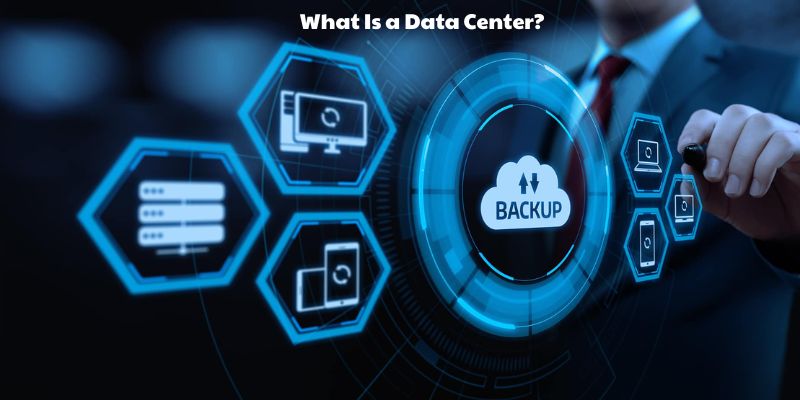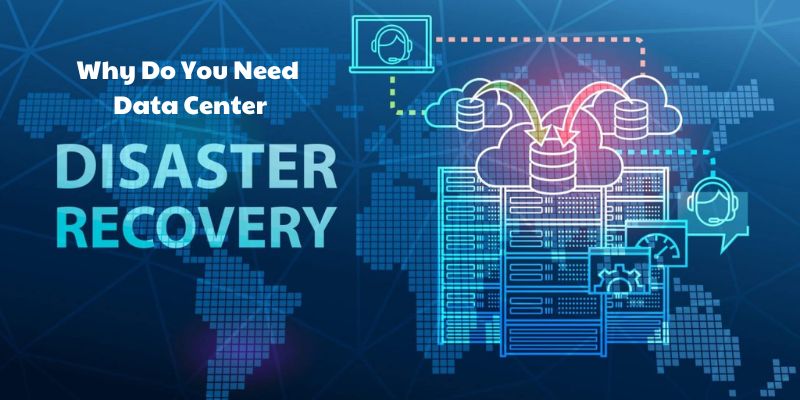If your firm is able to simply recover and quickly restart operations without suffering a significant disruption to your business, data center disaster recovery can be deemed successful. You may prepare for future disasters, reduce risks and hazards, and maximize company performance and productivity by developing a thorough data center disaster recovery strategy. Here is Disaster recovery data center: essential role by tindatviet.com.
What Is a Data Center?
A data center is a physical site where crucial data and applications are kept, computer systems and infrastructure components are located, and business operations are conducted. Infrastructure for data centers typically consists of servers, storage systems, routers, switches, security equipment, and application delivery controllers, among other things. To guarantee the high availability of disaster recovery data center and ongoing execution of crucial processes, each of these components has to be safely safeguarded.

Why Do You Need Data Center Disaster Recovery?
Organizations must give their consumers on-demand services and reduce the risk of data loss in order to remain competitive in their respective marketplaces. This explains why corporate owners are more interested in streamlining data center administration, maximizing resource use, reducing expenses, and assuring on-demand scalability and flexibility, which has led to a surge in demand for virtualization technologies.
As a result, during the past ten years, data center buildings have seen a significant transformation. Large-scale virtual environments have frequently taken the role of conventional on-premises data centers. Data centers are still quite vulnerable to a variety of risks and threats, including security breaches, data theft, ransomware attacks, viruses, and worms.
The capabilities of modern data centers are expanding quickly. They are always changing. The same is true of assaults on these centers, which are more complex and challenging to foresee and thwart. Therefore, it is imperative that you plan ahead for probable calamities and be cognizant of their potential repercussions.
A responsible business owner should think about which data center disaster recovery solutions are most effective for their specific data center facility in order to provide dependable data preservation and quick system recovery. You may develop a thorough data center disaster recovery strategy that will serve as your roadmap throughout the whole DR process based on the chosen DR techniques.

What Role Does Virtualization Play in Data Center Disaster Recovery?
As was already indicated, virtualization solutions are increasingly widely replacing conventional on-premises data centers. This is mostly due to the numerous advantages that virtualization offers, regardless of the size of the business or anticipated workload. Below, we’ll go into more depth on how virtualization might aid in disaster recovery data center.
Improving resource utilization
Traditional data centers rely heavily on physical servers, each of which is reserved for carrying out a particular task or powering a single application. As a result, the majority of hardware resources go underutilized and wasteful. The underlying physical hardware may be abstracted away using virtualization, and virtual hardware can take its place. So you may efficiently share computing resources across those virtual machines (VMs) by consolidating numerous VMs on top of a single physical server.
Eliminating compatibility issues
Hardware compatibility concerns during disaster recovery data center may arise in traditional data centers, which house computer systems that run on a range of server types. To avoid disaster recovery data center from failing in such a situation, you must deploy equivalent hardware at both the production center and the DR site. Building a DR site with hardware that is identical to that of the primary site, however, might be expensive.
On the other hand, a VM may be readily restored to any hardware via virtualization. Disaster recovery data center may be carried out effectively on each location even if the physical hardware is not compatible. All you need is a distant site with a handful of physical servers that are configured correctly and prepared to take on production workloads as necessary.
Conducting successful data center disaster recovery
By building VM backups and clones and storing them at a distant location, virtualization makes it simpler to secure your important data and apps. Additionally, virtualization makes it simple to move VMs from one server to another without losing the functionality or integrity of the data within. As a consequence, you may quickly relocate the production workload to a DR site and restart your operations there if a calamity strikes your data center.
The virtualization industry currently offers a wide range of backup and recovery solutions that help you plan backup and replication tasks, carry out failover and failback testing, and fully automate the DR process.
Non-disruptive testing
There is still a substantial chance of failure with disaster recovery data center, even after you have constructed a DR site and created a thorough DR strategy. As a result, you must do DR plan testing to ensure that the disaster recovery disaster recovery data center plan is operational, find any problems or discrepancies, and then update your DR plan as necessary. Without harming your production environment, evaluating DR techniques is possible even during business hours with the help of third-party data protection solutions.

Ensuring cost-efficiency
Businesses may spend less on buying and maintaining physical gear in data centers thanks to virtualization. You may create a DR site that requires less equipment, occupies less space, and is simple to manage by making optimal use of the physical resources that are already available.
A smaller number of physical servers, less networking equipment, and fewer server racks are now required to support DR operations thanks to virtualization, which can also significantly reduce the footprint of the data center. In essence, your capacity to effectively recover from disaster recovery data center will be higher the smaller your data center footprint.
Minimized downtime
Depending on the precise nature of the damage inflicted, it might take weeks or even months to resume operations and return a typical on-premises data center to its pre-disaster condition. In contrast, a virtualized disaster recovery data center much faster because, in the event of a disaster, you can quickly back up important data and applications, store them elsewhere, and fail over to a DR site. The DR process may even be fully automated with the help of several data protection solutions, which will lessen downtime and its effects on productivity.
Conclusion
It is understandable that some businesses chose third-party suppliers to handle disaster recovery data center (DR) operations in the event of a real disaster given the rising demand for data center services.
Because it is a difficult process that needs a significant amount of money and resources, disaster recovery data center was previously only within the budget of a select few major businesses. However, the development of virtualization technology has reduced the cost of disaster recovery for businesses of all sizes and income levels.
